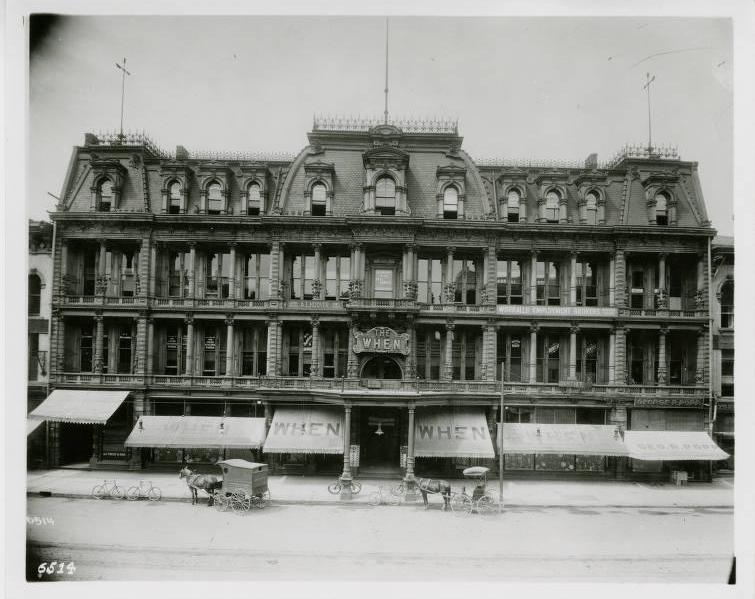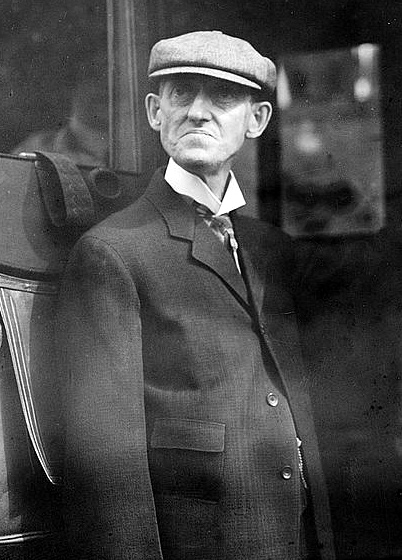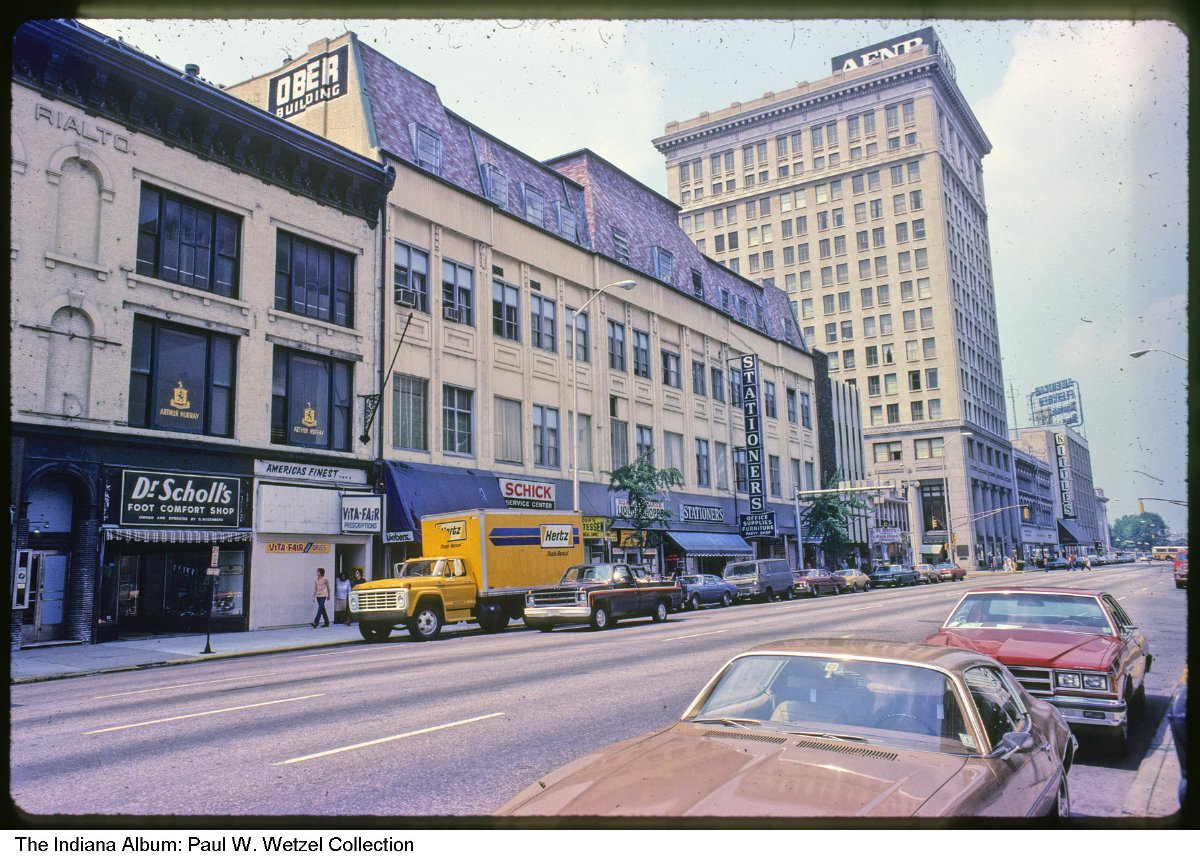came to Indianapolis in the mid-1870s from New York City to open a branch store for clothing wholesaler, Owen, Pixley & Company. In 1874 he purchased and set up shop on the lower level of a newly constructed Victorian-style building at 38 N. Pennsylvania Street.

Brush placed ads in the for the unnamed store with a “W” and nothing more. Beginning in February 1875, store advertisements printed in the also carried only the one-word question, “WHEN?.” The storefront maintained a sign reading, “Will be here soon.” Each day, a letter would appear in the storefront window: “W,” “H,” “E, “, and “N.”
The store finally opened on March 20, 1875. Because Indianapolis residents asked when the store would open, Brush named it When Clothing Company. The building where the store was located adopted the same name as the store, the When Building. The store was known as “the largest one-price clothing store” in Indianapolis.
The When, as it was known became as much an institution to Indianapolis shoppers as retailers , , and became. Similar to Chicago giants Sears and Montgomery Ward, The When used catalogs to introduce rural customers to good fashion.
The When Store occupied the bottom floor of the When Building. Various offices such as dentists, doctors, and schools occupied the other floors. The newly remodeled When Store was luxuriously appointed, with a mansard roof, cast-iron balustrades and balconies on the second and third floors, and an interior courtyard. Another attraction was a large, natural gas torch that burned in front of the building.

The main entrance featured winding stairs leading to a bandshell on the second floor. The When Band, who were store clerks when not performing, became a popular attraction at the clothing emporium. The band gave Saturday evening concerts outside on the street and on the building’s rooftop.
The When Store even had an employee baseball team. In 1882 Brush seized on the idea to use baseball as an advertising vehicle for his store. He organized a municipal baseball league and financed the creation of a baseball park with a grandstand for league games. Seventh Street Park, also called Tinker Park, was located at the site of the present-day Methodist Hospital. Brush’s team, the Indianapolis Hoosiers began to play in the American Association in 1884. Brush emblazoned their uniforms with “The When Store” and used Tinker Park as their home field. Brush later went on to become president of the National League New York Giants baseball club and was known as a pioneer in organized professional .
Another clever advertising tool Brush used was to bring a pair of leopard cubs to the storefront window on New Year’s Day 1895. The cubs, Carl and Amanda were loaned from the Hagenbeck-Wallace Circus. They spent almost one week as the window attraction at The When Store while the circus performed at .
Brush suffered from a nerve ailment in 1902, which led to his death in 1912. His brother and son-in-law continued to operate The When Store until 1931 when they shuttered the business.

In 1935, Stationers began a 60-year occupancy of a portion of the former When Building. The Ober family, who owned Stationers, purchased the building in 1946 and modernized it, eliminating the balconies and balustrades and renaming it the Ober Building. When Stationers terminated its occupancy in 1993, the building’s owner, the , removed the remaining tenants and placed it for sale.
Deemed to be in extremely poor condition and as a deterrent to the redevelopment of the Fletcher Trust Building, which had long been vacant at 10 Market Street, the Ober Building was demolished in 1995. A large parking structure replaced it.

Help improve this entry
Contribute information, offer corrections, suggest images.
You can also recommend new entries related to this topic.